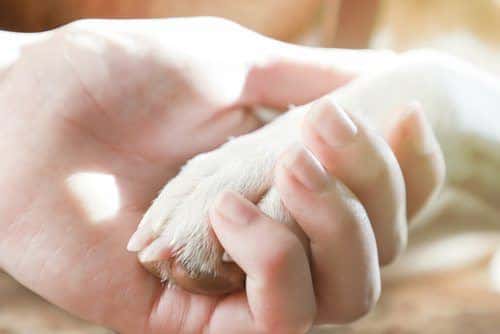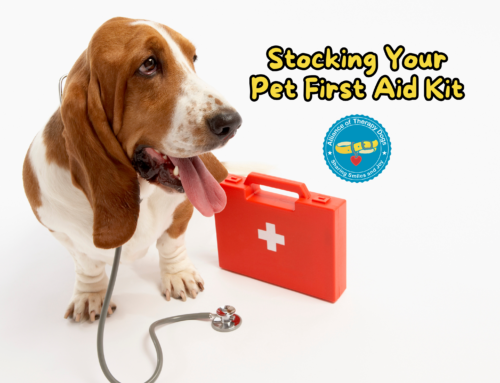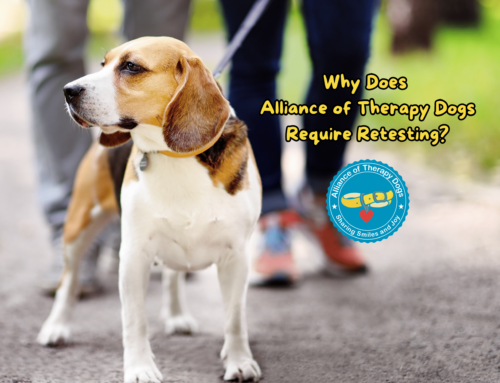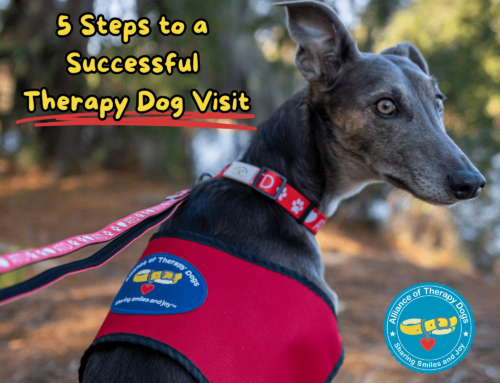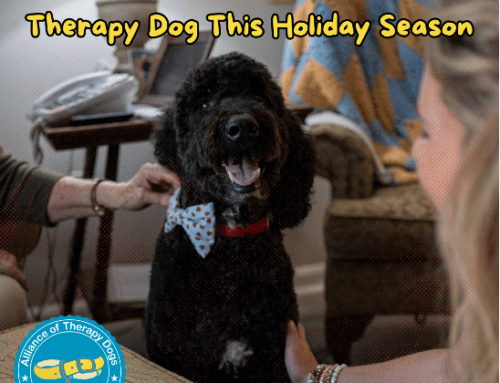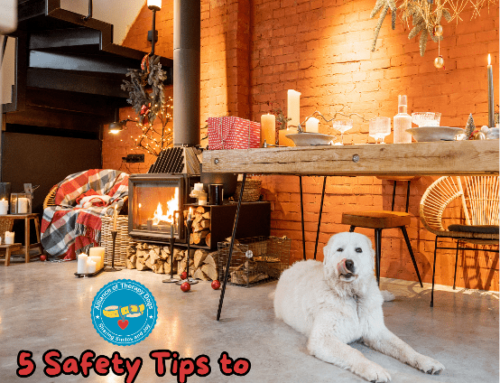At the Alliance of Therapy Dogs, the premier therapy dog organization in North America, we know how hard it is to cope with the loss of your dog. No matter how many times you experience the loss of a dog, it is difficult every time. Coping with the death of a beloved dog is never easy, but grieving is an important part of recovery. In this article, we will discuss what to expect when you lose a dog, the stages of grief, and the ways of helping children cope with the loss.
What Should I Expect After My Dog Dies?
Because your pet was an everyday part of your life, even the most mundane tasks can be heartbreaking. You might catch yourself getting ready to feed your dog or let him out, only to remember he is gone. Chances are, you will come home sometimes expecting your dog to greet you. Little things like scratch marks on the floor from doggie nails can trigger an emotional response. Items like dog beds, toys, bowls, leashes, collars, etc. are obvious reminders. However, getting rid of all the things that remind you of your dog is not necessarily the answer. If you wish to remove your dog’s belongings from sight, simply store them away somewhere. You might want to go back and look at them in the future.
What Are the Stages of Grief After the Loss of Your Dog?
These stages are not meant to compartmentalize grief, only to help us better understand grief. Depending on the person, these stages may overlap with one another or occur in different orders. You may not experience all of the stages as there is no formula for grief.
Denial. Denial is the first of the five stages of grief. It helps us to survive the loss. We are in a state of shock and denial. We go numb. We try to find a way to simply get through each day knowing that you will not be greeted as usual when returning home.
Denial and shock help us cope and make recovery possible as it causes us to pace our feelings of grief. There is a grace in denial. It is nature’s way allowing us to grieve only as much as we can handle. As you accept the reality of the loss of your dog and start to ask yourself questions, you are unknowingly beginning the healing process. You are becoming stronger, and the denial is beginning to fade. But as you proceed, all the feelings you were denying begin to surface.
Anger. Anger is a necessary stage of the healing process. Be willing to feel your anger, even though it may seem endless. The more you truly feel it, the more it will begin to dissipate and the more you will heal. Unfortunately, anger has no limits. It can extend to your friends, family, yourself and even the dog that died. Anger is strength and it can be an anchor, giving temporary structure to the nothingness of loss the of your dog.
Bargaining. Before a loss, it seems like you will do anything if only your dog could be spared. We become lost in a maze of “If only’s…” or “What ifs…” pleas. We want life returned to what it was; we want our dog back. Guilt is often bargaining’s companion. The “if only’s” cause us to find fault in ourselves and what we think we could have done differently. We remain in the past, trying to negotiate our way out of the hurt and bring our dog back.
Depression. After bargaining, our attention moves into the present. Empty feelings present themselves, and grief enters our lives on a deeper level and it is the appropriate response to a great loss. Depression after the loss of a dog is too often seen as unnatural: a state to be fixed, something to snap out of. To not experience depression after your dog dies would be unusual. If grief is a process of healing, then depression is one of the many necessary steps along the way.
Acceptance. Acceptance is often confused with the notion of being OK with the death of your dog. Most people rarely feel OK about the loss of a dog. This stage is about accepting the reality that our pup is physically gone and recognizing that this new reality is the permanent reality and, eventually, we accept it.
How Can I Help My Children Grieve the Loss of the Family Dog?
The loss of the family dog may be your child’s first experience of death and your first opportunity to teach them about coping with the grief and pain that inevitably accompanies the joy of loving another living creature. Losing a dog can be a traumatic experience for any child. Many kids love their dogs very deeply and some may not even remember a time in their life when the dog wasn’t around. A child may feel angry and blame themselves—or you—for the dog’s death. A child may feel scared that other people or animals they love may also leave them. How you handle the grieving process can determine whether the experience has a positive or negative effect on your child’s personal development.
Some parents feel they should try to shield their children from the sadness of losing a dog by either not talking about the dog’s death, or by not being honest about what has happened. Pretending the animal ran away, for example, can leave a child feeling even more confused, frightened, and betrayed when they finally learn the truth. It is far better to be honest with children and allow them the opportunity to grieve in their own way.
Let your child see you express your own grief at the loss of the dog. If you do not experience the same sense of loss as your child, respect their grief and let them express their feelings openly, without making them feel ashamed or guilty. Children should feel proud that they have so much compassion and care deeply about their dogs.
Reassure your child that they were not responsible for the dog’s death. The death of a dog can raise a lot of questions and fears in a child. You may need to reassure your child that you, their parents, are not also likely to die. It is important to talk about all their feelings and concerns.
Consider involving your child in the dying process. If you have chosen euthanasia for your dog, be honest with your child. Explain why the choice is necessary and give the child chance to spend some special time with the dog and say goodbye in their own way.
Do not rush out to get the child a “replacement dog” before they have had the chance to grieve. Your child may feel disloyal, or you could send the message that the grief and sadness felt when something dies can simply be overcome by buying a replacement.
At the Alliance of Therapy Dogs, we have experienced the pain of the loss of a best friend as well as the best friends of others. The dog gave your family a lot more than you could ever have given them. There are no rules to death, dying, grief and recovery. For many, the loss of a dog is akin to losing a family member and should be treated as such.

